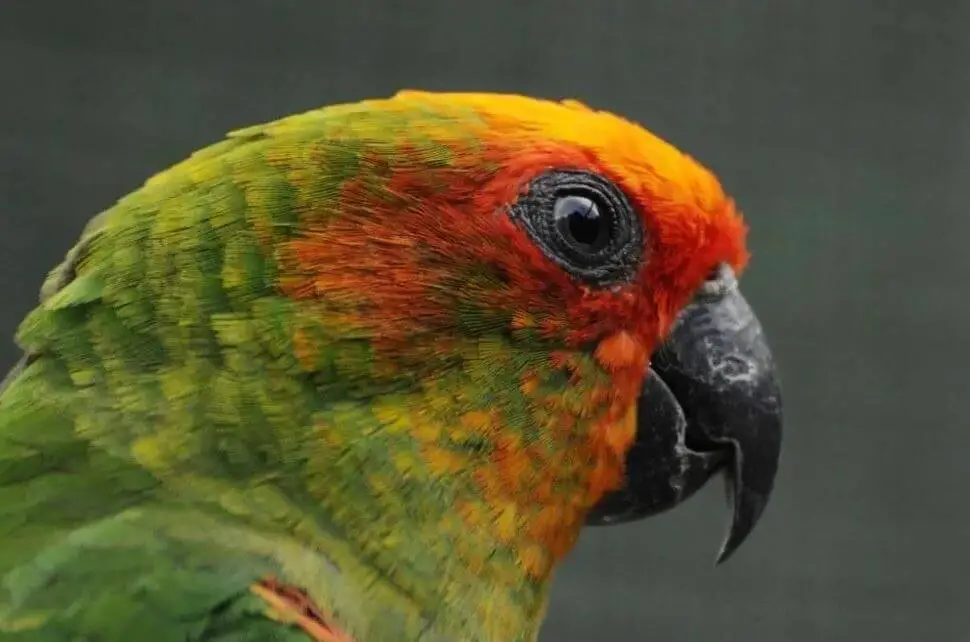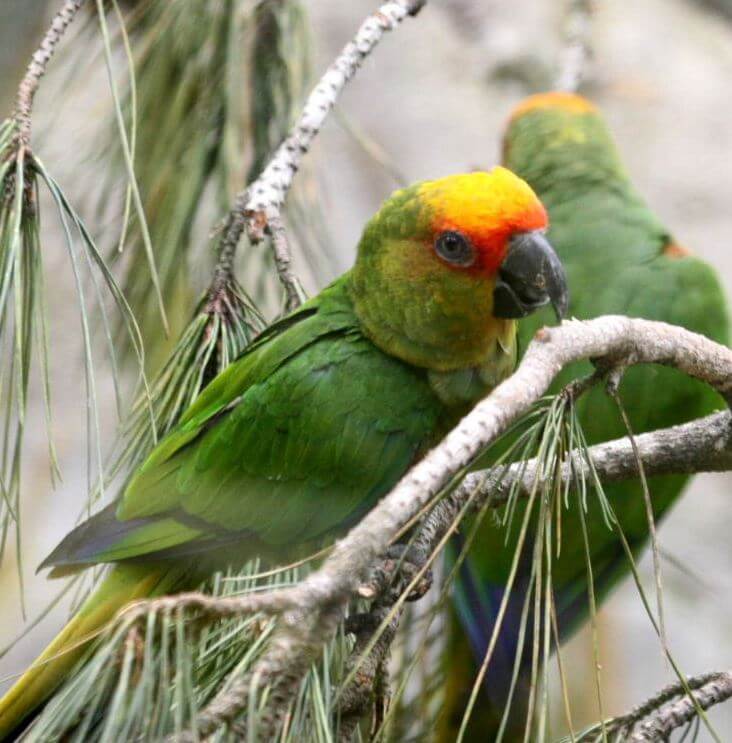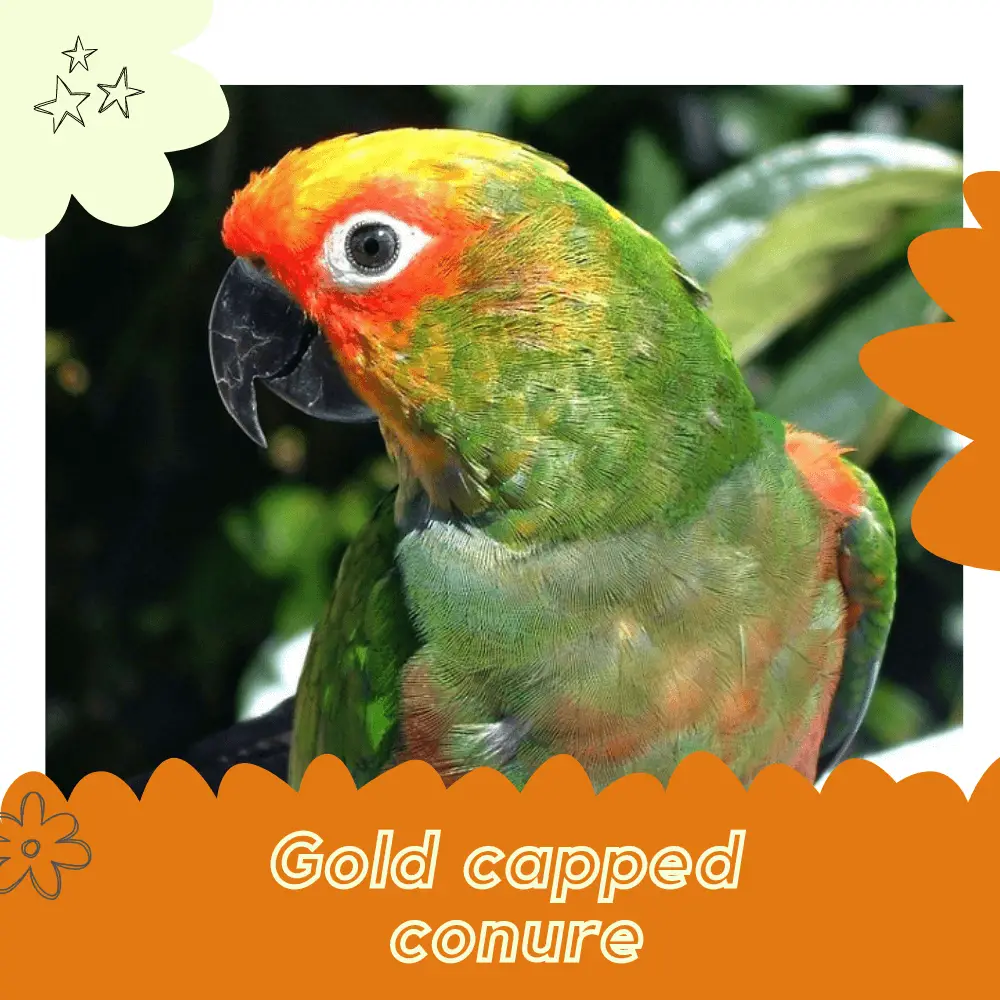Gold capped conure (Aratinga auricapillus) is a species of parrot in the genus Aratinga, endemic to Brazil.
Description
The Gold capped conure has a body length of 30 cm, the tail length is 13-15 cm. The top is predominantly green in color.
The chin and throat are yellowish-green fading to greenish-orange on the upper part of the chest, and the belly is red.

The coloring on the forehead, the reins and around the eyes is bright red, the top of the head is yellow. The back feathers and the upper rump are variably bordered in red or orange.
The large upper wing coverts, the secondaries as well as the outer flags and tips of the primaries are blue, the under-wing-coverts are orange-red, and the undersides of the wings are grey.
The Gold capped conure‘s undertail-coverts are green, the upper tail feathers are brownish with a blue tip.
Sometimes the outer vanes of the outer tail feathers are blue. The lower tail feathers are grey.
Its beak is black-grey. He has grey, unfeathered circles under his eyes, the iris is yellowish. The legs are greyish in color.
Males and females are alike. The yellow of the top of the head is paler in young birds than in adults.
The red on the rump is less or absent. The breast is greener and has no orange tint. The red area on the abdomen is smaller.
Subspecies
Two subspecies are distinguished. Animals from southern Bahia mostly belong to transitional forms between the two subspecies.
Aratinga auricapillus auricapillus (Kuhl, 1820) – North and Central Bahia . nominate form .
Aratinga auricapillus aurifrons Spix , 1824 ,-Southern Goiás and Minas Gerais and from Espírito Santo to Santa Catarina .
The breast of this subspecies is greener, absent the orange hue of the nominate form. The upper side is completely green, and the red feather edges on the back and on the upper rump are missing.
Gold capped conure talking
Source: vabello
Distribution and Habitat
The Gold capped conure is common in the mountains of south-eastern Brazil. In the states of São Paulo and Paraná, the species is only found in the eastern rainforests, apparently no longer in Espírito Santo.
It is very rare or extinct in Rio de Janeiro and Santa Catarina. It is still locally common in Goiás , Minas Gerais and Bahia.
The natural habitat of the Gold capped conure is the humid Atlantic coastal forest and transitional forests inland.
It is largely dependent on primary semi-evergreen forests, but will also forage and breed in forest edges, in secondary forests, agricultural areas, and even in cities. It occurs at altitudes of up to 2180 m.
Way of life

Gold capped conures are gregarious animals and generally form groups of 12-20, rarely up to 40 birds.
They feed on seeds and fruits, as well as crops such as corn, okra, and various sweet, soft fruits such as mango, papaya, and oranges.
The species was considered an agricultural pest in some areas of Brazil before its population in those areas declined sharply.
Little is known about reproduction in the wild, the breeding season is probably November to December.
Endangerment
Habitat destruction and capture for trade had bothered this species so much that it was listed as near endangered.
The species is now downgraded to Near Threatened (NT) on the International Union for Conservation of Nature and Natural Resources (IUCN) Red List of Threatened Species (2008) due to the loss of moderately small populations in some areas of habitat declining, but the species appears to be coping relatively well with habitat changes.
The Gold capped conure is listed in Appendix II of the Washington Convention on the Protection of Species (CITES) and in Appendix B of EC Regulation 709/2010 [EC] and is specially protected under the Federal Nature Conservation Act [BG] (Status::b).
read also:

